1. What’s Happening to the Honeybees And Why Is It Important To Us?

Over the last two decades, honeybee populations have been vanishing at an alarming rate, leaving scientists, beekeepers, and farmers deeply concerned. According to Britannica, the phenomenon, known as Colony Collapse Disorder (CCD), occurs when worker bees mysteriously abandon their hives, leaving behind the queen, larvae, and a handful of young bees. Without the workforce to maintain the hive, the entire colony soon collapses. Unlike normal population declines caused by predators or diseases, CCD is unique because the bees don’t simply die—they disappear entirely, leaving empty hives with no clear explanation. This mysterious vanishing act has led to widespread research, with scientists scrambling to find out exactly what’s driving the disappearance of one of the world’s most essential pollinators.
The urgency of this crisis cannot be overstated, as honeybees play an indispensable role in global food production. They are responsible for pollinating about one-third of the crops we eat, including fruits, vegetables, and nuts. Without honeybees, many of these crops would suffer drastic declines, leading to food shortages and skyrocketing prices. Moreover, honeybees contribute to the pollination of wild plants that sustain entire ecosystems, meaning their disappearance could have devastating ripple effects on biodiversity. Understanding why honeybees are vanishing is not just about saving one species—it’s about protecting global agriculture, food security, and the delicate balance of nature itself.
2. Pesticides—Are They Poisoning the Pollinators?
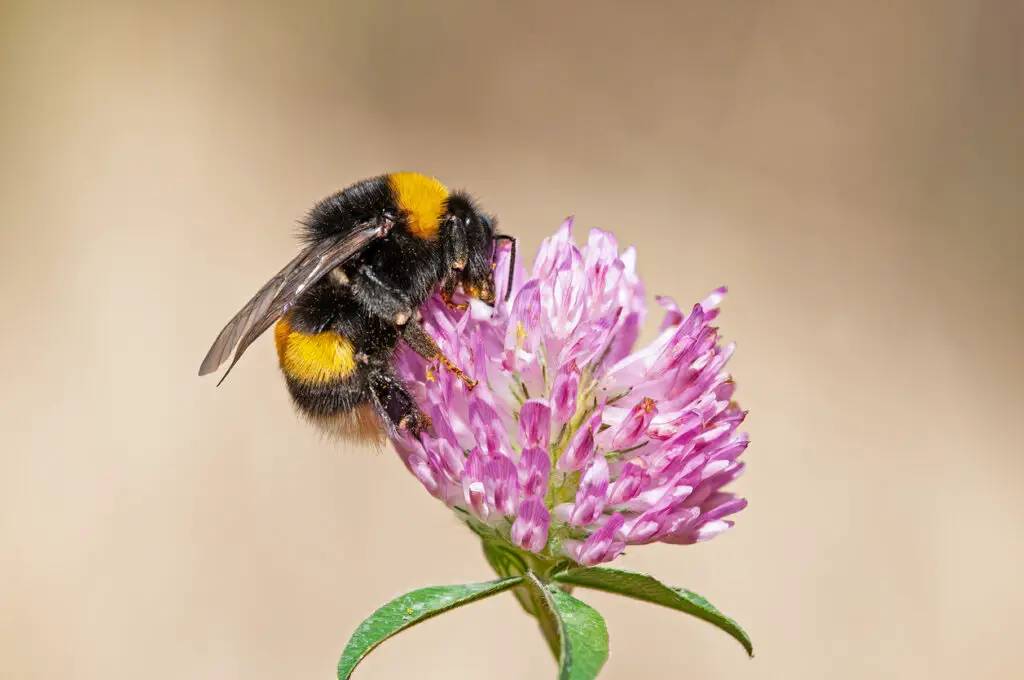
One of the leading suspects behind the honeybee crisis is the widespread use of pesticides, particularly a class of chemicals known as neonicotinoids, according to PubMed Central. These pesticides are commonly used in industrial farming to protect crops from pests, but they also have devastating effects on bees. Studies have shown that even low doses of neonicotinoids can interfere with a bee’s ability to navigate, forage, and communicate, ultimately leading to colony failure. When bees ingest nectar and pollen contaminated with these chemicals, they become disoriented, making it difficult for them to return to their hives. Over time, the colony weakens as fewer and fewer worker bees make it back home.
The impact of pesticides on honeybees extends beyond individual colonies—it threatens entire ecosystems and food chains. When bees are exposed to toxic chemicals, the effects trickle down to other pollinators and the plants that depend on them. Some countries have begun banning or restricting neonicotinoids, but agriculture remains heavily dependent on chemical pest control, making it difficult to implement widespread changes. If alternative, bee-friendly farming methods are not adopted soon, pesticide exposure could continue to drive honeybee populations toward collapse, bringing the world closer to a dangerous food crisis.
3. Climate Change—Messing with Bees’ Natural Rhythms

Climate change is reshaping the natural world in ways that honeybees are struggling to adapt to, according to Ecrotek. Rising temperatures and shifting weather patterns are causing plants to bloom earlier or later than usual, which disrupts the bees’ natural foraging cycles. If flowers bloom before bees are active, the insects miss out on crucial nectar sources, leading to nutritional stress and weaker colonies. Additionally, hotter summers and unpredictable storms make it harder for bees to survive in regions that were once ideal for them. Extreme heat can overheat beehives, reducing productivity and sometimes killing entire colonies.
Climate change also affects the spread of bee diseases and pests, making it easier for deadly parasites like the Varroa mite to thrive. Warmer winters allow these parasites to survive in greater numbers, putting more stress on already struggling bee populations. On top of that, prolonged droughts reduce the availability of wildflowers and water sources, further depleting bees’ food supplies. If global temperatures continue to rise unchecked, honeybees could face even harsher survival challenges, exacerbating the already alarming rate of population decline.
4. Habitat Loss—Destroying Bees’ Natural Homes
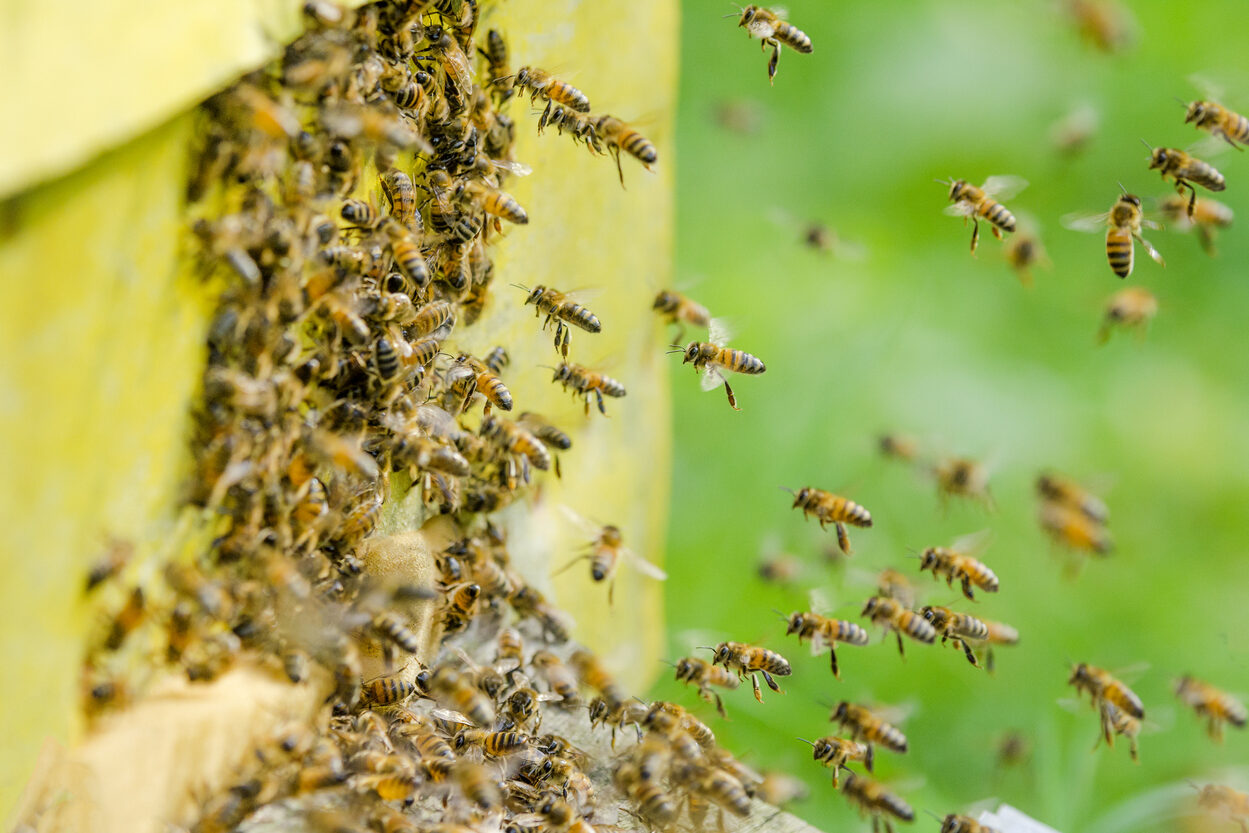
Honeybees thrive in diverse landscapes with abundant flowers, trees, and water sources, but human activity is rapidly destroying their natural habitats, according to Friends of the Earth. Deforestation, urbanization, and industrial agriculture are wiping out the meadows, forests, and grasslands that once provided bees with plentiful food and shelter. As farms expand and cities grow, bees are being forced to survive in increasingly fragmented environments where floral resources are scarce. When they can’t find enough nectar and pollen to sustain their hives, colonies become weak and vulnerable to disease and predators.
Monoculture farming—where large areas of land are planted with a single crop, such as corn or wheat—further limits bees’ food options. Unlike wildflower-rich meadows, monoculture farms provide only one type of nectar for a limited time, leaving bees struggling to find food for the rest of the year. This nutritional deficiency weakens their immune systems, making them less able to fight off infections and parasites. Without intervention, habitat destruction could continue to push honeybee populations toward extinction, creating a chain reaction of consequences for ecosystems and food production worldwide.
5. The Deadly Varroa Mite—A Tiny Parasite That’s Wiping Out Entire Colonies
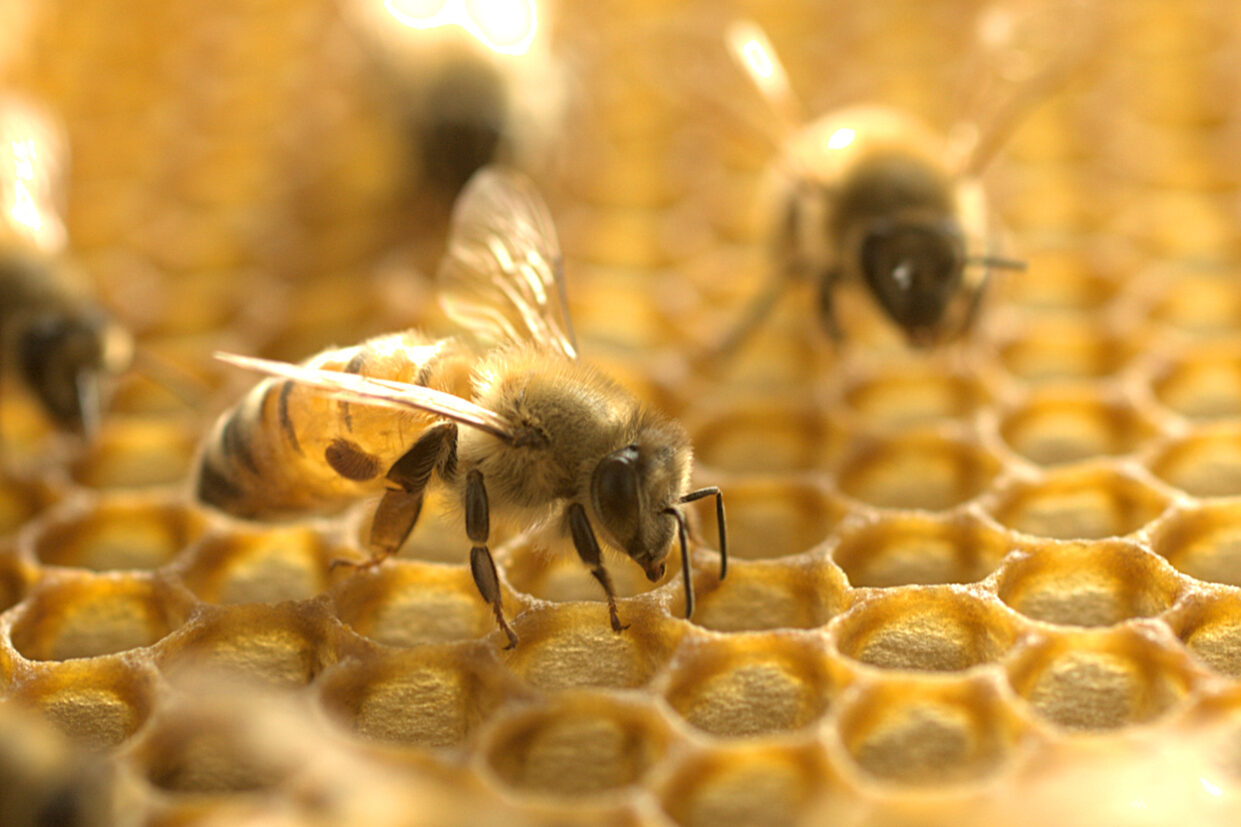
One of the biggest killers of honeybee colonies worldwide is the Varroa destructor, a parasitic mite that attaches itself to bees and slowly drains their bodily fluids, weakening them over time, according to Beeaware. These tiny, reddish-brown parasites may not look like much, but they are absolutely devastating to bee populations. Once a hive is infested, the mites reproduce rapidly, latching onto developing bee larvae and feeding on them before they even emerge as adults. This weakens young bees, making them more susceptible to diseases, deformities, and early death. Infested hives often experience massive population losses, with entire colonies collapsing if the infestation goes untreated. The worst part? The mites can spread viruses that further compromise a bee’s immune system, meaning that even if a bee survives an attack, it may still succumb to secondary infections.
The varroa mite problem is especially concerning because traditional beekeeping methods are struggling to keep up with the infestation. Chemical treatments designed to kill the mites have limited effectiveness, as the parasites have developed resistance to many pesticides over time. Beekeepers are left trying a mix of solutions—such as breeding mite-resistant bees, using essential oils like thymol, and physically removing mites from hives—but none of these methods are foolproof. In heavily infested areas, beekeepers lose up to 90% of their colonies in a single year, causing severe economic damage to the honey industry and food production. If scientists don’t find a sustainable way to control these mites, honeybee populations could continue to plummet, bringing agriculture to its knees.
6. Diseases and Fungal Infections—The Invisible Killers Lurking in Hives
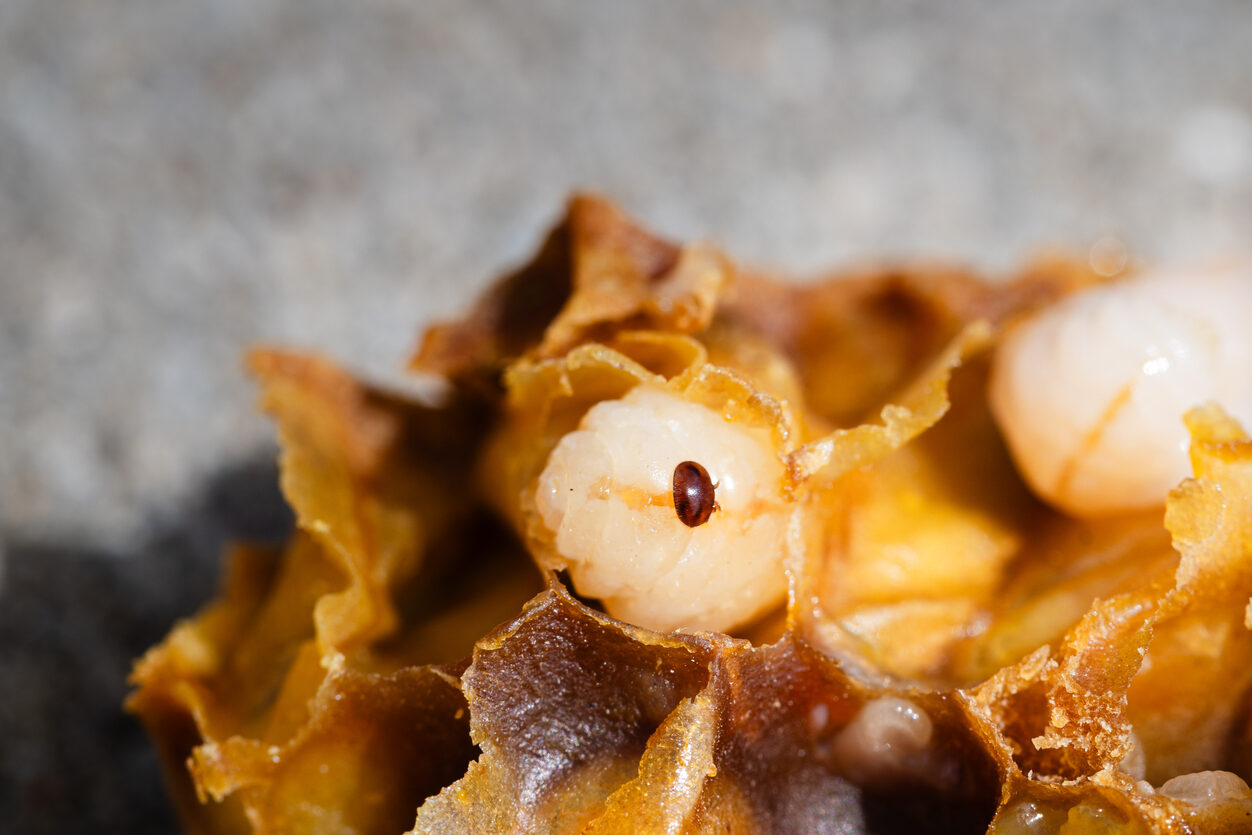
Aside from parasites, honeybees are also battling a growing number of deadly diseases and fungal infections that weaken their immune systems and cause colony collapse. One of the most notorious bacterial diseases is American foulbrood (AFB), a highly contagious infection that targets bee larvae, turning them into a foul-smelling, rotting mass inside the hive. Once a colony is infected with AFB, the disease spreads rapidly, and there’s no cure—beekeepers are often forced to burn entire hives to stop it from spreading to other colonies. Then there’s Nosema, a fungal infection that attacks the bees’ digestive systems, causing diarrhea, malnutrition, and early death. Infected bees become too weak to forage, leading to food shortages within the hive and eventual collapse.
What makes these diseases especially dangerous is that many of them are spreading faster due to climate change and global trade. Warmer temperatures allow pathogens to survive longer, and the global transportation of bees for commercial pollination is accelerating the spread of infections from one region to another. Some scientists believe that honeybees’ immune systems are weakening due to pesticide exposure, making them more vulnerable to these diseases. Without effective treatments, beekeepers are struggling to keep their colonies healthy, and the rise in bee deaths is pushing the world toward a potential pollination crisis. If we don’t take urgent action to stop the spread of these infections, honeybee populations could dwindle to dangerously low levels, threatening food production on a global scale.
Click here for more stories like this
7. Stress from Commercial Beekeeping—Overworked and Overexposed
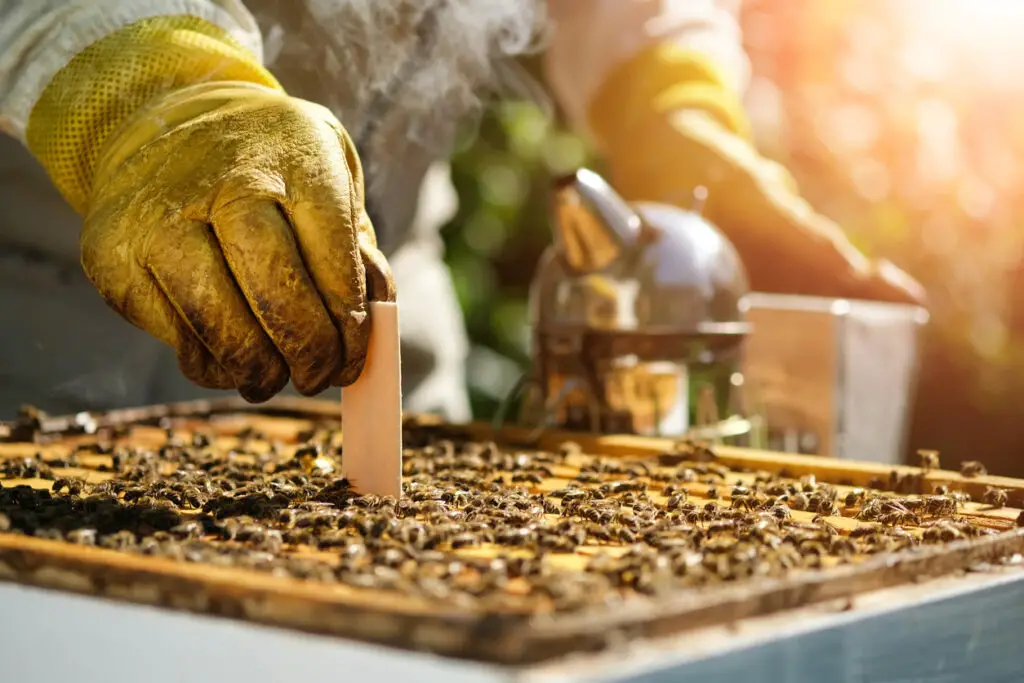
While beekeeping is often seen as a way to support honeybee populations, the reality is that modern commercial beekeeping may actually be hurting bees as much as it helps them. Many large-scale beekeeping operations treat bees more like farm animals than wild pollinators, subjecting them to stressful conditions that weaken their health. One major issue is the practice of migratory beekeeping, where commercial beekeepers transport thousands of hives across the country to pollinate different crops. While this is necessary for large-scale agriculture, constant travel exposes bees to exhaustion, malnutrition, and increased risk of disease. The stress of frequent relocation makes them more susceptible to colony collapse, and the mix of bees from different hives allows diseases and parasites to spread rapidly.
Additionally, many commercial beekeepers rely on sugar syrup or corn syrup as a substitute for natural nectar, which lacks the essential nutrients bees need to stay healthy. In natural environments, bees get a diverse diet from a variety of flowers, but in commercial settings, they often only have access to a monoculture diet from a single type of crop, like almonds or apples. This weakens their immune systems, making them more vulnerable to pesticides, infections, and parasites. While commercial beekeeping is crucial for modern agriculture, it’s clear that current practices need to be reformed to prioritize bee health. If commercial hives continue to decline, the agricultural industry could face devastating consequences, as there simply won’t be enough bees left to pollinate crops at the scale required to feed the world.
8. Monoculture Farming—Starving Bees with Limited Diets
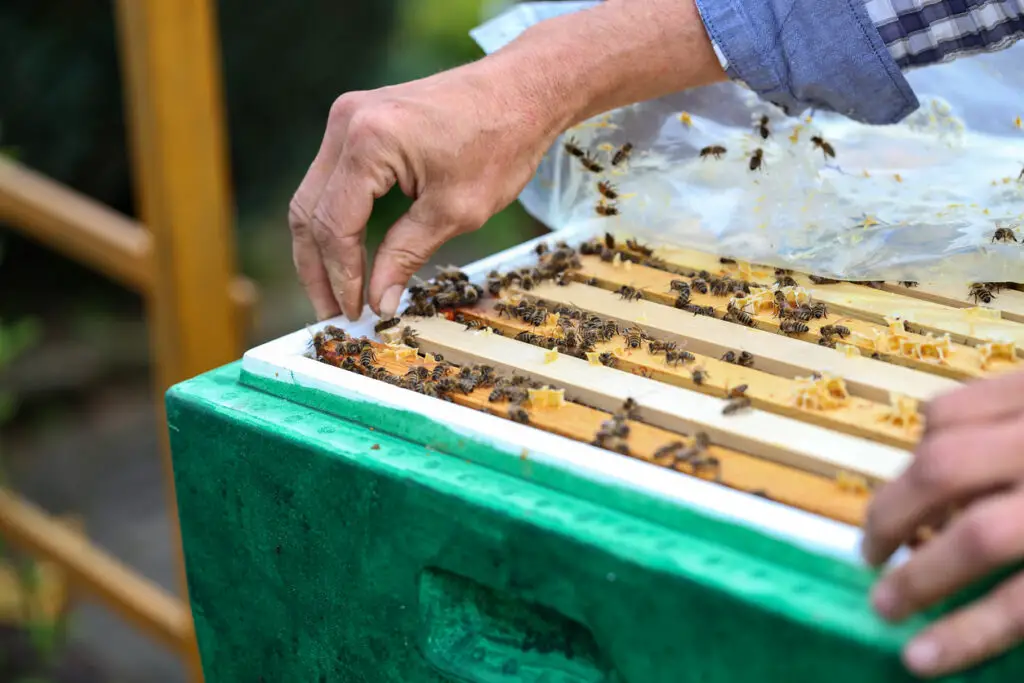
Monoculture farming, where large swaths of land are dedicated to growing only one type of crop, has become the standard in modern agriculture. While this method maximizes efficiency for human food production, it has devastating consequences for honeybees. Bees rely on a diverse range of flowers for nectar and pollen, which provide them with the nutrients they need to survive. However, monoculture farms offer only a single source of nectar for a short period, leaving bees with nothing to eat for the rest of the year. This is particularly evident in massive almond orchards, which honeybees are transported to in large numbers for pollination. Once the almond trees stop blooming, the bees are left in a food desert, leading to malnutrition, weakened immune systems, and increased vulnerability to disease and pesticides.
Beyond food scarcity, monoculture farming exposes bees to higher levels of pesticides and disrupts their natural foraging behaviors. In diverse ecosystems, bees can choose from multiple food sources, but in monoculture settings, they are forced to feed exclusively on crops that may be contaminated with pesticides. This constant exposure increases their chances of suffering from pesticide poisoning, which further contributes to colony collapse. Some scientists and environmentalists advocate for integrating wildflowers and hedgerows into farmlands to give bees access to varied nutrition throughout the year. Without this change, monoculture farming will continue to drain the health of bee populations, pushing them closer to extinction and jeopardizing the future of global agriculture.
9. Air Pollution—Interfering with Bees’ Ability to Find Food

Air pollution isn’t just a problem for humans—it’s also making life incredibly difficult for honeybees. Bees rely on their highly sensitive sense of smell to locate flowers and distinguish between different nectar sources. However, increasing levels of air pollution are interfering with their ability to recognize floral scents, making it harder for them to find food. Industrial emissions, vehicle exhaust, and chemical pollutants in the air break down the organic compounds in flower scents, reducing the distance at which bees can detect nectar-rich plants. This forces bees to spend more energy searching for food, which leads to lower efficiency, higher stress levels, and reduced colony survival rates.
In addition to disrupting their foraging abilities, air pollution is weakening bees’ immune systems and increasing their exposure to toxic particles. Tiny pollutants from factories and cars can settle on flowers, contaminating the nectar and pollen that bees consume. Over time, these toxins accumulate in the bees’ bodies, making them more susceptible to disease and shortening their lifespans. Some studies suggest that prolonged exposure to high levels of pollution can disrupt bees’ brain function, affecting their ability to navigate and communicate with the hive. If air pollution continues to worsen, honeybees will struggle even more to adapt, further accelerating the decline of already vulnerable colonies.
10. Cell Tower Radiation—Disrupting Bees’ Navigation and Communication
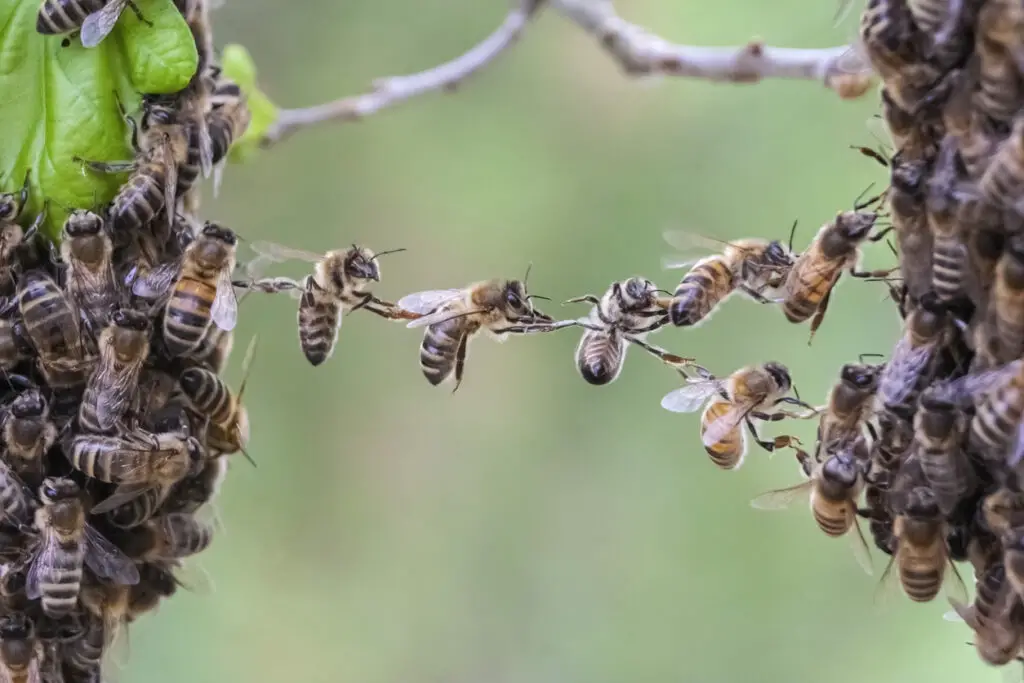
In the age of smartphones and wireless technology, there’s growing concern that radiofrequency radiation (RFR) from cell towers and Wi-Fi networks may be interfering with honeybees’ natural behaviors. Bees rely heavily on the Earth’s magnetic fields and complex communication systems to navigate, find food, and return to their hives. However, some studies suggest that increasing exposure to electromagnetic waves from cell towers and wireless devices may disrupt their ability to orient themselves, causing confusion and disorientation. This leads to higher rates of bees getting lost and failing to return to the hive, a key characteristic of Colony Collapse Disorder (CCD).
Beyond navigation issues, electromagnetic radiation may also affect bees at the biological level, altering their nervous system function and increasing stress levels. Some experiments have shown that bees exposed to high levels of RFR exhibit unusual behaviors, such as reduced foraging activity, increased aggression, and weakened immune responses. While more research is needed to confirm the full extent of the impact, the rapid expansion of wireless networks and cell towers could be an overlooked factor in honeybee decline. If this issue is not addressed, continued exposure to electromagnetic pollution could further weaken already fragile bee populations, pushing them closer to collapse.
11. Invasive Species—New Predators and Competitors Threatening Bees
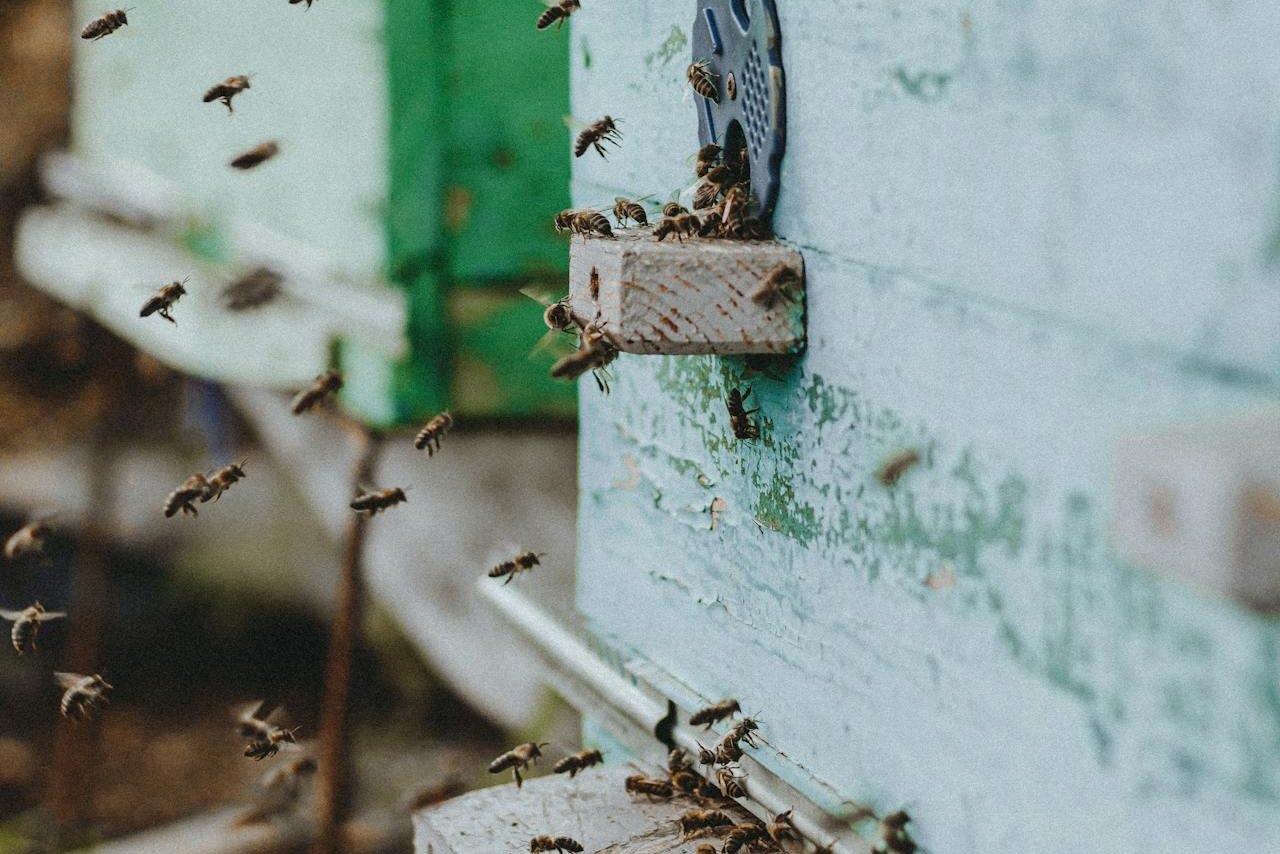
As ecosystems become more connected due to globalization, honeybees are now facing threats from invasive species that were never part of their natural environment. One of the most infamous examples is the Asian giant hornet, also known as the “murder hornet.” These hornets, which are native to parts of Asia, have made their way into North America and Europe, where they pose a serious threat to honeybee colonies. Unlike local predators, which honeybees have evolved to defend against, Asian giant hornets are far more aggressive and highly effective hunters. They can wipe out an entire hive within hours, ripping apart worker bees and decapitating them before feasting on their larvae. A single hornet attack can lead to massive losses for a colony, especially since honeybees lack the natural defenses to fight back against such a formidable predator.
Beyond predators, honeybees are also facing increased competition from other invasive bee species, which are outcompeting them for nectar and pollen. For example, some non-native bumblebee species introduced for greenhouse farming have begun to spread into wild ecosystems, monopolizing floral resources and reducing the food available for native honeybees. These foreign bees may also carry new diseases and parasites that local honeybees have no immunity against, further weakening their populations. As invasive species continue to spread across the world, honeybee colonies are being forced to adapt to entirely new threats, many of which they are not equipped to handle. Without intervention, invasive species could accelerate the decline of honeybee populations, adding yet another layer to the growing crisis.
12. Urbanization—Concrete Jungles Replacing Natural Bee Habitats
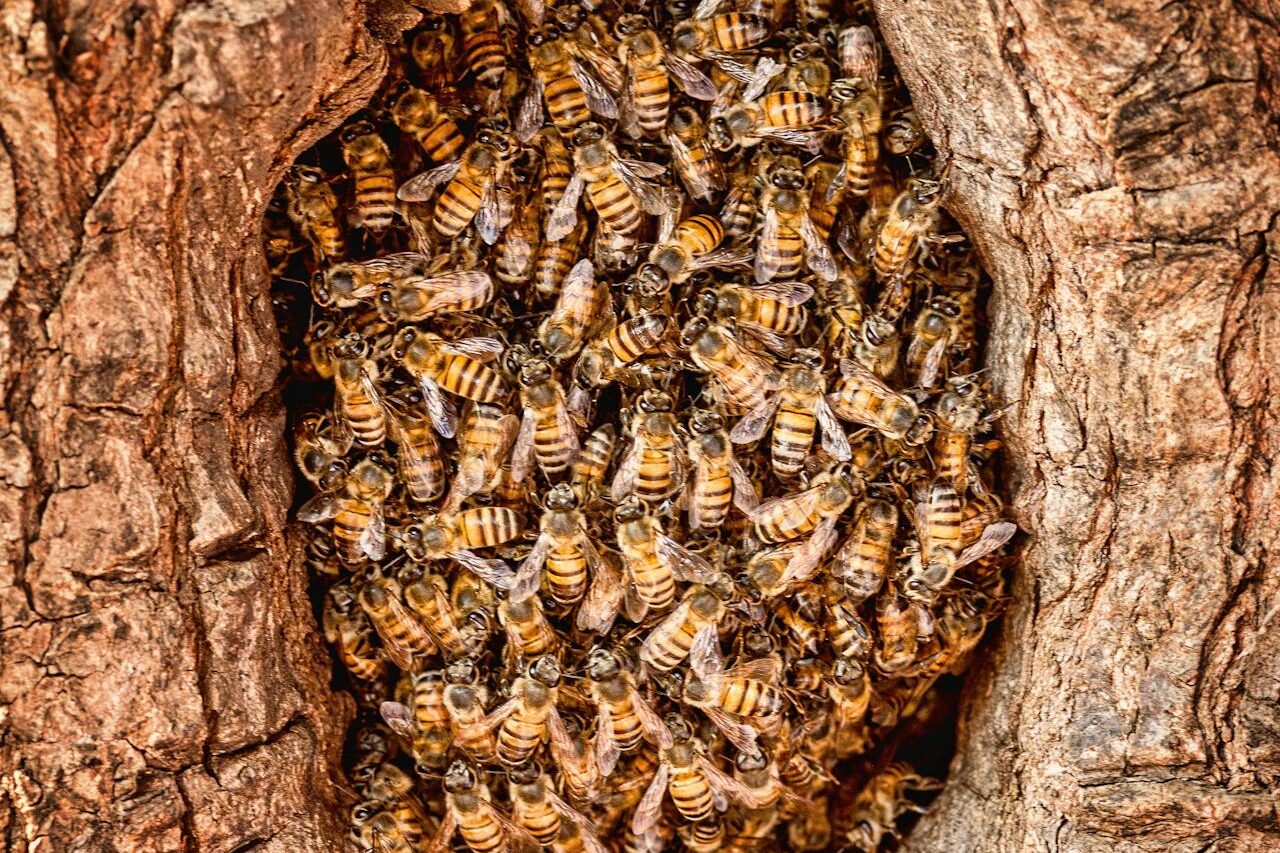
The rapid expansion of cities and urban areas has drastically reduced the natural habitats that honeybees rely on for survival. As forests, grasslands, and meadows are cleared to make way for buildings, roads, and infrastructure, bees are left with fewer flowers to forage from and fewer safe places to build their hives. Unlike rural landscapes, which are often rich in diverse plant life, urban environments are dominated by concrete, glass, and asphalt, leaving little room for the wildflowers and trees that bees depend on for food. This forces honeybees to travel greater distances in search of nectar, expending more energy and increasing their risk of exhaustion and starvation. Without enough floral resources, many colonies become weaker and less productive, leading to higher mortality rates.
Urbanization also contributes to the rise in light pollution, noise pollution, and air pollution, all of which negatively impact bee behavior. Artificial lighting at night can disrupt bees’ natural circadian rhythms, making it harder for them to regulate their activity cycles. Noise pollution from traffic and construction can interfere with their communication and navigation, causing confusion and stress. Additionally, cities tend to have higher temperatures due to the “urban heat island effect,” which can make survival even more challenging for heat-sensitive bee species. While urban beekeeping has become popular in some cities, it is not enough to offset the large-scale destruction of natural bee habitats. If urban expansion continues unchecked, honeybees will struggle even more to find the food and shelter they need to sustain their colonies, further endangering their populations.
13. The Ripple Effect—How Honeybee Loss Could Devastate the World

The disappearance of honeybees is not just a problem for beekeepers—it is a crisis that could send shockwaves throughout the global food system and natural ecosystems. Honeybees are responsible for pollinating nearly 75% of the crops that feed the human population, including fruits, vegetables, nuts, and legumes. Without them, food production would plummet, leading to massive shortages, skyrocketing prices, and increased hunger worldwide. Crops like apples, almonds, blueberries, and coffee rely heavily on honeybee pollination, meaning that if bee populations continue to decline, these foods could become luxury items that only the wealthy can afford. This would worsen global food inequality, hitting low-income communities the hardest.
Beyond agriculture, the loss of honeybees would have devastating effects on ecosystems, as bees play a crucial role in maintaining biodiversity. Many wild plants rely on honeybees for pollination, and without them, entire plant species could disappear, leading to a chain reaction that affects insects, birds, and other animals that depend on those plants for survival. Forests, meadows, and grasslands would suffer, leading to habitat destruction for countless species. The economic impact would also be staggering, as industries that rely on honeybee pollination—such as agriculture, horticulture, and food production—would face billions of dollars in losses annually. If honeybees disappear, the consequences would extend far beyond just honey production—it could reshape entire economies, ecosystems, and societies as we know them.


